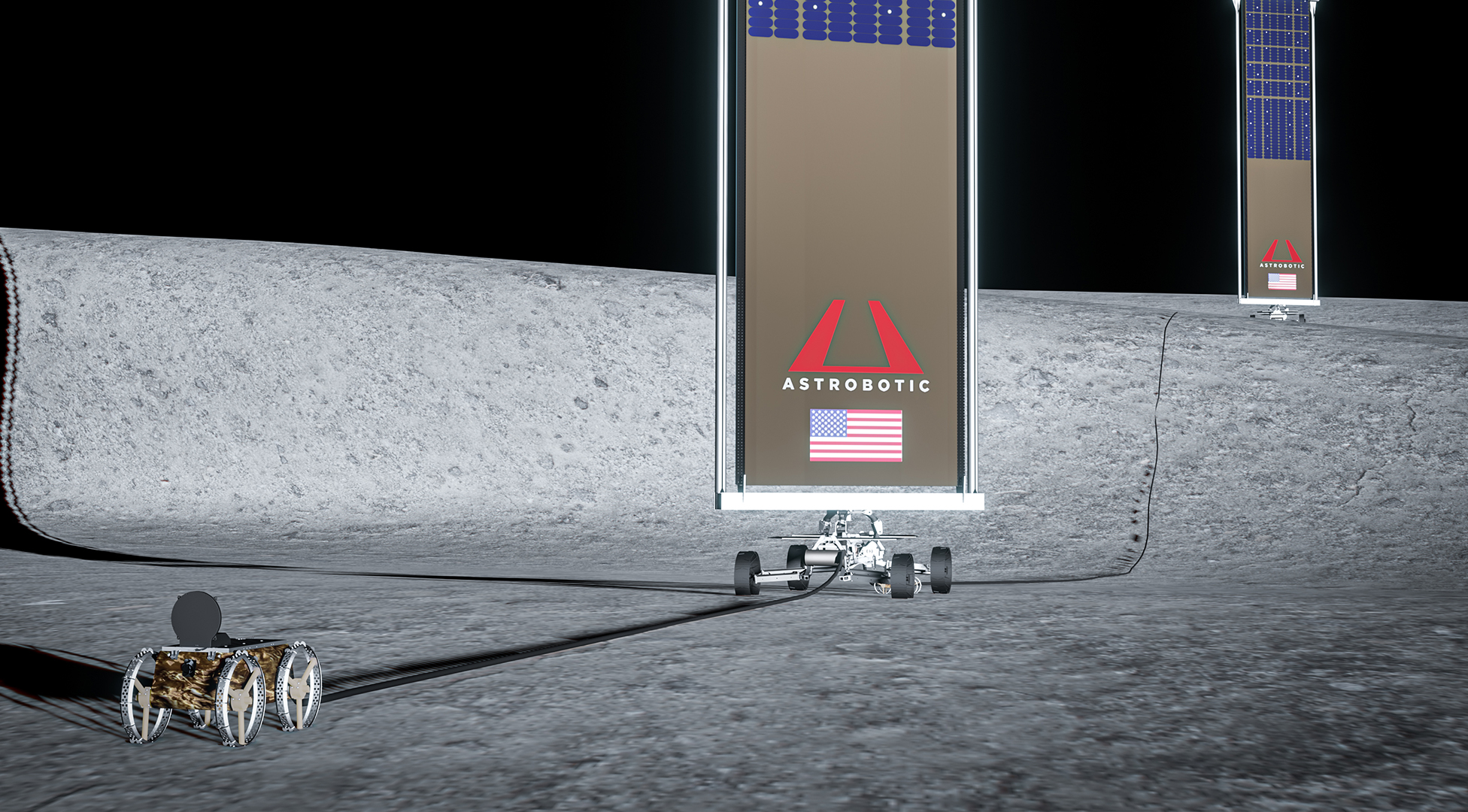
Paris, France, September 19, 2022 – Today at the 73rd International Astronautical Congress in Paris, Astrobotic announced LunaGrid, a commercial power service for the poles of the Moon. LunaGrid is a power generation and distribution service that will deliver power by the watt to landers, rovers, habitats, science suites, and other lunar surface systems. The service will enable space agencies’, companies’, and nonprofits’ systems to survive the lunar night and operate indefinitely on the Moon starting at the lunar south pole.
The world’s collective ambitions for the Moon hinge on the establishment of reliable electrical power. Astronaut habitats, in-situ resource utilization systems, communication networks, long distance rover mobility, far side observatories, and commercial business plans all require substantial, uninterrupted power. Without power, most operations will be limited to just one lunar day (14-Earth days), as the lunar night induces untenably cold conditions (as low as -220 degrees C). To address this challenge and open the Moon to multi-year human and robotic operation, LunaGrid will supply power to systems for lunar night survival and multi-year operations.
LunaGrid is a culmination of systems under development now at Astrobotic. It makes use of the company’s landers, rovers, and wireless chargers as well its Vertical Solar Array Technology (VSAT), which is in development at Astrobotic in concert with NASA’s Space Technology Mission Directorate. Astrobotic was awarded a follow-on $6.2 million contract by NASA in August to further advance its VSAT systems.
The first deployment of the LunaGrid system will integrate a VSAT onto an Astrobotic lunar lander and fly to the Moon on a single launch vehicle. Upon landing, the lander will deploy its VSAT to begin generating solar power. Power from the VSAT will be distributed by wireless chargers and tethered CubeRovers, which act as mobile power outlets for customers on the Moon by bringing VSAT-generated power to surface assets. Each VSAT will include the transformers and power management systems needed to extend power capabilities beyond the VSAT itself and into a fully fledged power grid.
“Over the last 15 years, we’ve come to appreciate that power on the Moon is everything,” said Astrobotic CEO, John Thornton. “By leveraging existing technologies already under development at Astrobotic, we can bring a much needed power service to the Moon in short order. Solar power is affordable, commercially friendly, technically mature, and deployable now. LunaGrid’s solar-based system offers the world the fastest, most economical means of establishing sustained lunar presence with no policy hurdles.”
Astrobotic plans to begin deploying and demonstrating LunaGrid elements as early as 2026 with the goal of the first operational LunaGrid by 2028 at the lunar south pole. With LunaGrid power service available, a host of science, exploration, and commercial activity can begin sustained and continuous operation. Astrobotic plans to provide power to NASA’s Artemis program, decadal-class science missions, CLPS missions, international space agency missions, and commercial businesses. LunaGrid systems can be placed at multiple locations at the poles of the Moon and, by incorporating additional VSATs and other power sources over time, can be scaled to increase future service coverage.
“LunaGrid is the next step in lunar development for our customers. Astrobotic delivers kilograms to the Moon via our landers, drives kilograms across the lunar surface via our rovers, and now provides watts on the Moon via LunaGrid,” added Thornton.

